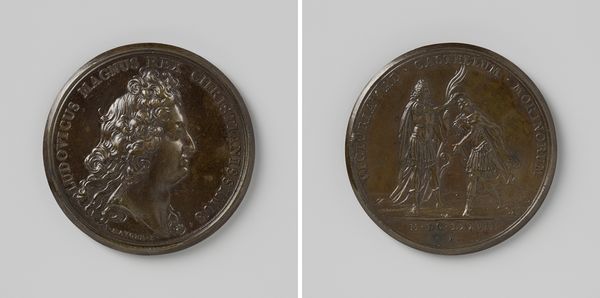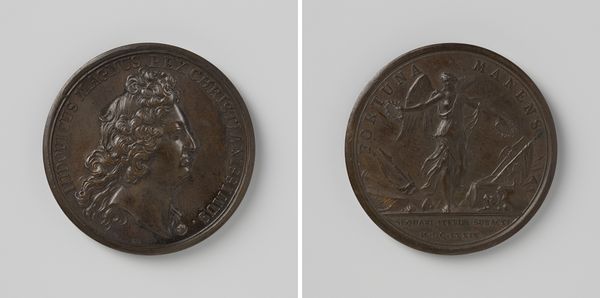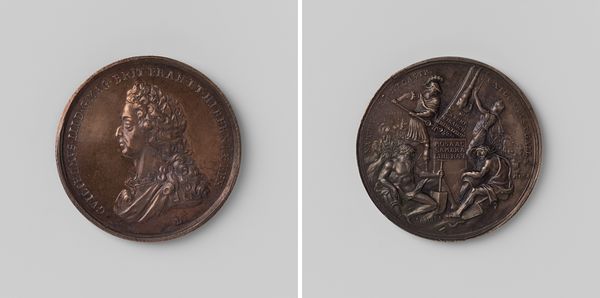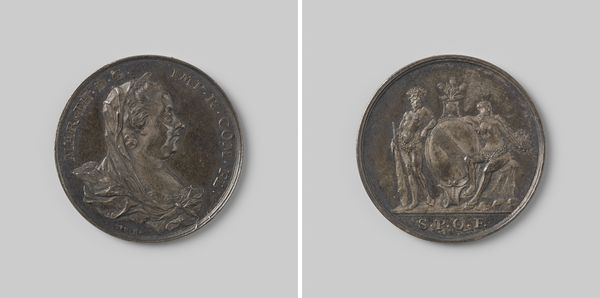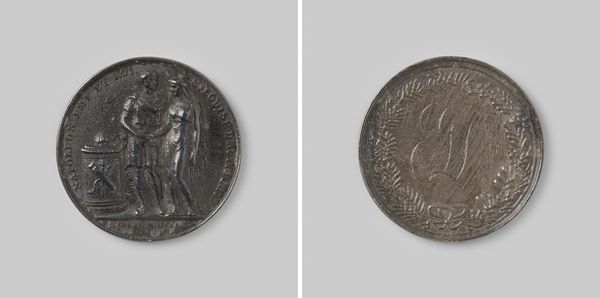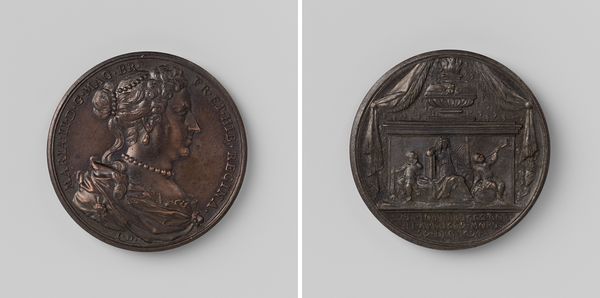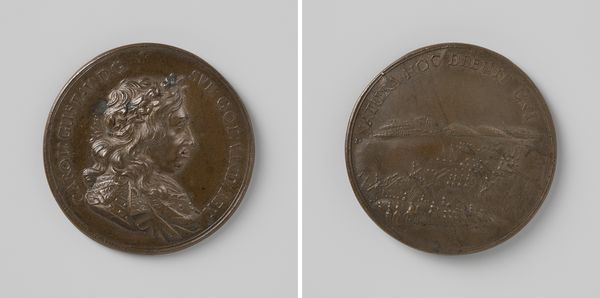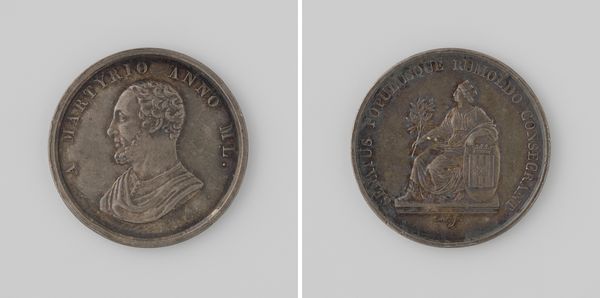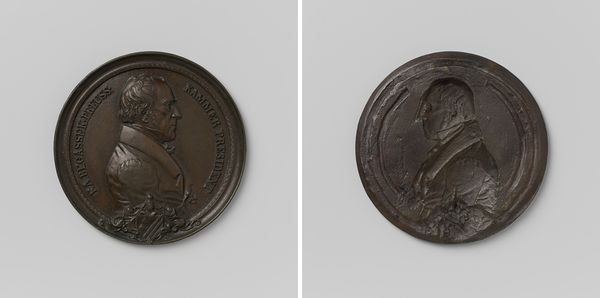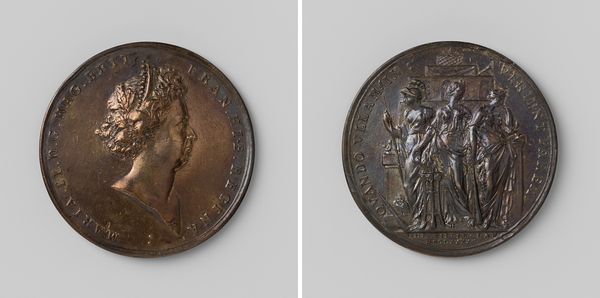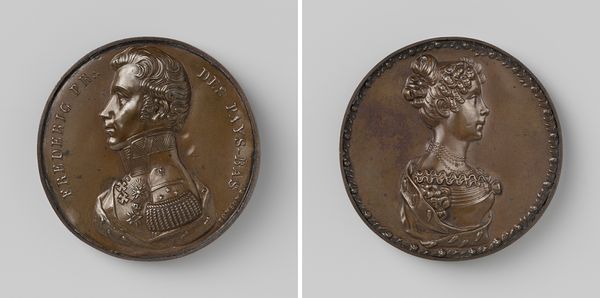
metal, bronze, sculpture
#
portrait
#
neoclacissism
#
metal
#
sculpture
#
bronze
#
sculpture
#
history-painting
#
nude
Dimensions: diameter 4.7 cm, weight 533 gr
Copyright: Rijks Museum: Open Domain
Editor: Here we have a bronze medal created in 1820 by Luigi Pichler, titled "Karl Philip, prins zu Schwarzenberg." The medal format, with two distinct sides, immediately draws my eye. What stands out to you about this work? Curator: Note how the obverse and reverse interact formally. The stark profile portrait of Schwarzenberg contrasts sharply with the allegorical nude figure on the other side. Consider the deliberate juxtaposition of these forms; the head, isolated and contained within the circle's edge, versus the free-standing, idealized body occupying a similar circular space. It presents a dialogue of representation. Editor: A dialogue, you say? How so? Curator: The profile head employs realistic representation with Neoclassical severity, evidenced by the sharp lines and restrained emotion. The nude, however, relies on classical idealization; its meaning arises from its conventionalized posture and the symbols it holds: the branch signifying peace and the shield alluding to protection. This raises the question: how do these two contrasting visual languages converge to shape meaning? Is Pichler proposing that true peace arises from armed strength? Editor: So, the artwork’s value lies less in its historical context and more in its structure and symbolic relationships? Curator: Precisely. Consider the tactile qualities imparted by the bronze material. The coldness and durability inherently suggest the enduring nature of both memory and victory. Did you observe the artist's deliberate positioning of Schwarzenberg’s likeness? Notice how the text follows the perimeter of both faces of the metal, framing each scene as it progresses? Editor: I do now. Thank you! Seeing these visual strategies offers a completely different entry point. Curator: Indeed. Formal analysis unlocks another plane through which we appreciate artistic intentions, divorced from biographical concerns or historical events.
Comments
No comments
Be the first to comment and join the conversation on the ultimate creative platform.
